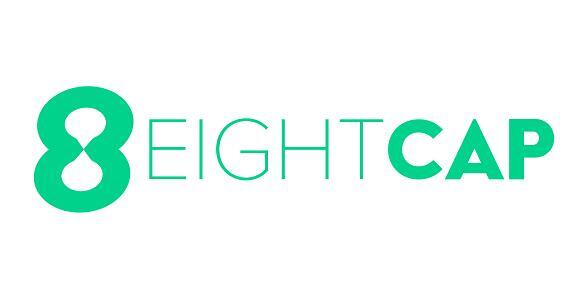
An MCA is a type of business financing that differs from a traditional small-business loan. It is repaid to the lender through a portion of your business’ future sales. Lenders that offer an MCA charge a factor rate, which is a fee that is added to your funding amount, to arrive at a fixed master budget repayment amount. If your small business is struggling with a cash-flow issue, as many do, you may be wondering if a merchant cash advance (MCA) is right for you. An MCA can help founders of new startups who have little to no business history or businesses with low credit scores.
How to start your career in accounting: A guide for beginners in finance — Hindustan Times
How to start your career in accounting: A guide for beginners in finance.
Posted: Thu, 07 Sep 2023 11:21:08 GMT [source]
Small Business Trends is an award-winning online publication for small business owners, entrepreneurs and the people who interact with them. Our mission is to bring you “Small business success … delivered daily.” Once you are approved for an MCA, funding may be deposited in your bank account in as little as 24 hours. Advance payment should never include any profit margin for you.
Cash Advance Received From Customer
But, is there another vendor who was perhaps a little higher but doesn’t require the risk of you paying an advance payment? This should be carefully considered and the risk implications deliberated. Remember that you should avoid a price that has come in way below the norm. There is always a degree of risk involved when https://online-accounting.net/ you decide to provide your vendor with an advance payment. It is a 50/50 risk where the project could either run without a hitch or the vendor could head for the hills with your money, leaving the project incomplete. The problems that arise with an advance payment often occur through mismanagement of the funds.
The advance will be reversed to reduce the full amount of payable. It will increase the advance which is the current assets on the balance sheet. The cash will be credited depending on the amount paid to the supplier.
Are merchant cash advances (MCAs) legal?
The money can be withdrawn at an ATM or, depending on the credit card company, from a check that is deposited or cashed at a bank. Credit card cash advances typically carry an interest rate that is higher than the rate for regular purchases. What’s more, the interest begins to accrue immediately; there is no grace period. When the company paid cash in advance, it must be recorded as assets on the balance sheet. Most of the time, it is recorded as cash advance which is the current assets.

The seller is unwilling to advance credit to the customer and so demands payment in advance. Another key element to understanding the general ledger, and the third step in the accounting cycle, is how to calculate balances in ledger accounts. Colfax Market is a small corner grocery store that carries a variety of staple items such as meat, milk, eggs, bread, and so on. As a smaller grocery store, Colfax does not offer the variety of products found in a larger supermarket or chain. It’s a good idea for industries with a high number of transactions per month like restaurants, bars and a lot of B2C companies like retail and even nail salons. One of the criteria is being able to forecast a steady flow of customers.
AccountingTools
When advance payments are earned within a year (as is usually the case), they need to be listed as current liabilities. Credit The cash represents an advance payment for goods to be delivered in the future. As the revenue has not been earned it must be recorded as a liability. In this case the amount is shown in the cash advances account. Alternatively, providing the cash advance relates to revenue, a deferred or unearned revenue account could have been used. This is because the repayment of cash advances is variable — based on a percentage of daily sales.
- The most popular type of cash advance is borrowing on a line of credit through a credit card.
- A cash advance received from customer journal entry is required when a business receives a cash payment from a customer in advance of delivering goods or services.
- As these assets are used, they are expended and recorded on the income statement for the period in which they are incurred.
In a transaction with cash in advance terms, the seller requires the buyer to make the entire payment upfront in order to initiate the process of shipping the expected goods. This protects the seller from lost money for goods shipped without payment and also alleviates any need for collections recourse. Start with a clear understanding of how this funding option to help your small business survive and thrive. “This is for new businesses and ones that haven’t been in business for 6 months as well as businesses with an owner FICO below 600,” Kassis says. A cash advance is also a good choice for shop owners without many hard assets.
Journal Entry for Cash paid in Advance
Companies generally adjust their invoice receivable days to manage for risks and industry standards. The total cost of an MCA is the funding you received plus a factor rate and any additional fees. Your factor rate will be determined by your business history and credit score. A factor rate of 1.1 is equivalent to 110% of your lump sum payment. For example, a $100,000 payment with a 1.1 factor rate means you will have to repay $110,000. Because of the high cost of MCAs in the form of a factor rate, you will end up paying a much higher APR than for a small-business loan.
- The money due to the taxpayer is paid to the insurance company in advance of the actual due date for the credit.
- For example, a $100,000 payment with a 1.1 factor rate means you will have to repay $110,000.
- Advance payment is a type of payment made ahead of its normal schedule such as paying for a good or service before you actually receive it.
- The general ledger is helpful in that a company can easily extract account and balance information.
The reputation of your vendor should be a deciding factor in whether or not to prepare to supply an advance. It is best to do some research and find out how they have fared on other projects. One should consider some points when giving an advance to your vendor. Most companies realize that without the money to do a job, you cannot expect the job to run smoothly. The workforce you put in place for the project is vital to the success of the project.
How to account for advance payments
Because the total repayment amount is fixed, there is also no benefit to early repayment, unlike a traditional business loan, for which interest is charged on outstanding principal. The payment should reflect in various areas of your accounting records. The cash account will debit the amount, and this will increase your expenses. This will, in turn, decrease your expenses but increase your liability and equity accounting records. We know from the accounting equation that assets increase on the debit side and decrease on the credit side.

Once all journal entries have been posted to T‑accounts, we can check to make sure the accounting equation remains balanced. A summary showing the T‑accounts for Printing Plus is presented in Figure 3.10. You can see at the top is the name of the account “Cash,” as well as the assigned account number “101.” Remember, all asset accounts will start with the number 1.

